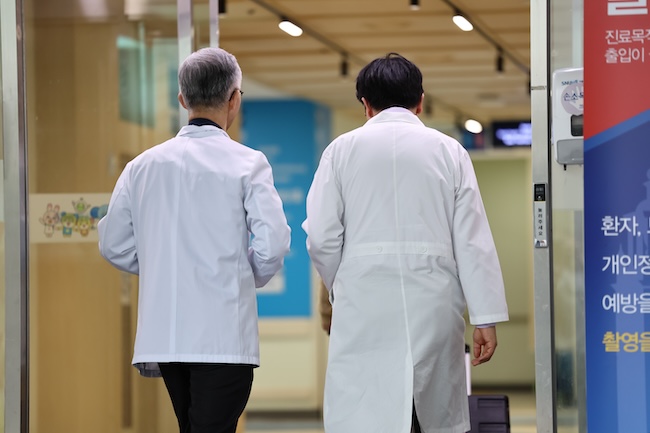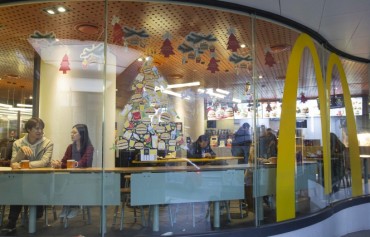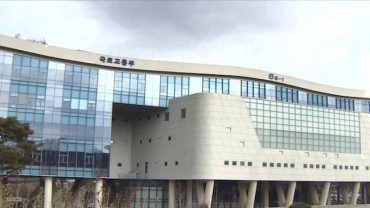
Doctors enter a building at Seoul National University Hospital in Seoul on April 23, 2024. (Image courtesy of Yonhap)
SEOUL, Apr. 30 (Korea Bizwire) – South Korea’s industrial makeup grew more service-driven during the Covid-19 pandemic as the healthcare and remote service sectors expanded while manufacturing contracted, central bank data has revealed.
The share of services in the country’s total output climbed 4.4 percentage points to 49.3% in 2020 from 44.9% five years earlier, according to the Bank of Korea’s updated input-output tables covering 2020.
Conversely, the manufacturing sector’s portion shrank 4.3 percentage points to 40.2% over the same period.
Measured by value added, services accounted for 63.8% of economic output in 2020, up 3.9 percentage points, while manufacturing’s share fell 3.5 percentage points to 26%.
“The healthcare and non-face-to-face service markets grew significantly during Covid-19, accelerating the ongoing shift toward a service-oriented economy,” said Jeong Young-ho, head of the BOK’s input-output analysis team.
South Korea’s total supply of goods and services rose 17.1% to 5,221.2 trillion won in 2020 from 2015 levels. But international trade accounted for a smaller 26.5% share, down 3.6 percentage points, as the pandemic dampened cross-border commerce.
Private consumption expanded to 36.4% of final demand from 35.6%, while the government’s consumption role grew to 13% from 11.1%. But the share of exports shrank to 26.6% from 31.7%.
The export ratio of total output fell 3 percentage points to 15.7% in 2020, and import dependence on intermediate goods declined 1.8 percentage points to 10.7%, partly aided by lower oil prices.
While the production inducement coefficient measuring the output boost from a unit increase in domestic final demand slipped slightly to 1.804, the value-added inducement coefficient rose 0.032 to 0.806 as high value-added services gained ground.
Still, that value-added indicator lagged major economies like the United States at 0.944, Japan at 0.903 and Britain at 0.873, the BOK noted.
The import inducement coefficient measuring import dependence decreased by 0.03 to 0.246 amid lower energy costs.
With services playing a greater role, their sensitivity coefficient reflecting knock-on effects throughout supply chains rose to 2.211 from 2.015, surpassing the declining 1.925 level for manufacturing products.
M. H. Lee (mhlee@koreabizwire.com)






